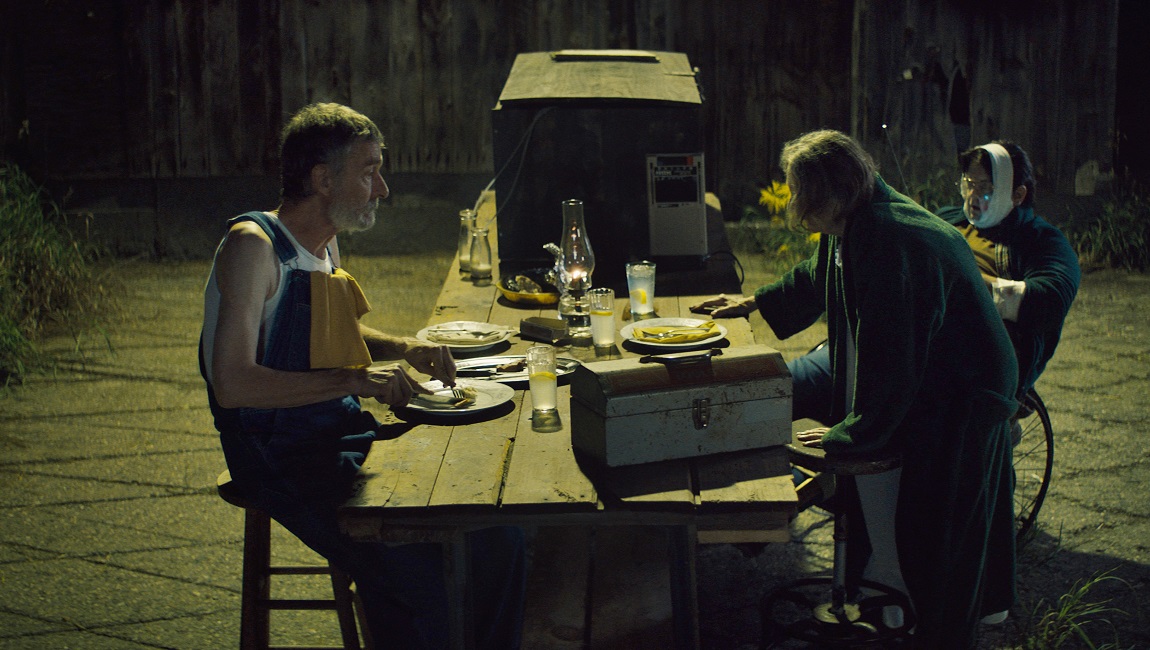In his landmark 1993 work Culture and Imperialism, historian Edward W. Said observes, “peoples being conscious of themselves as prisoners in their own land… returns again and again in the literature of the imperialized world. The history of empire… in Haiti, Madagascar, Burma, the Philippines, Egypt, and elsewhere, seems incoherent unless one recognizes that sense of beleaguered imprisonment infused with a passion for community that grounds anti-imperialist resistance in cultural effort.” Those phrases— “’a passion for community” and “cultural effort” — feel particularly apt when applied to Kite Zo A: Leave the Bones, an essayistic documentary that concerns itself with nothing less than the overflowing vibrancy and vitality of present-day Haiti.
Director/cinematographer/editor Kaveh Nabatian smartly eschews much of the audience hand-holding endemic to contemporary issue docs, opting instead for an immersive collage of various performers and street-level subject interviews, all set to Malickian narration courtesy of poet Wood-Jerry Gabriel. A very brief introductory text acknowledges Bois Caïman, then continues, “where Africa meets the tip of a Caribbean island, where Boukman drowned the suffering of a race in the blood of a pig in 1791 to redefine the word liberty in 1804 and trace a new tomorrow. Our history is long and has no end.” Bois Caïman was the site where the first large insurrection of the Haitian Revolution was planned; Dutty Boukman was a leader in that revolution, instigating a slave rebellion with a Vodou (voodoo) ceremony, considered to be a “sacred ritual.” History lesson aside, Nabatian then launches into a series of vibrant, even exuberant, explosions of movement — there are dancers, but also surfers (Nabatian supplied some people with Go-Pro cameras to film themselves in their respective moment) and a particularly fun tangent that explores the surprisingly large rollerblading sub-culture in Haiti. Interspersed with all of this are various religious ceremonies and assorted pageantry. There’s Vodou, of course, although the filmmaker is careful not to show it as some kind of horrific freak show, instead representing it as an essential spiritual practice. But there’s also a visit to a Christian church; as Nabatian explains in an interview with the website Awards Radar, Haiti is “50% Catholic, 50% Protestant, and 100% Vodou.”
Much of the film’s last act, of a fairly brief film at that (it’s only 67 minutes), is occupied by preparations for the annual Mardi Gras celebration, with ample footage of musicians performing in the street and people donning all manner of costumes. There are traditional, symbolic outfits, but also glimpses of someone made up like a blue Avatar alien and a young man who freely mixes Batman and Joker makeup together, remixing and recontextualizing American iconography into something new and unique. The threat of violence hovers around the margins of the film; even a cursory knowledge of contemporary Haiti is replete with stories of crime, political upheaval, and devastating natural disasters. The film recognizes this harsh reality, but Kite Zo A ultimately reveals itself to be about transformations, a document of a people in a still ongoing struggle to define themselves and build something from the ruins of an imperialism-ravaged past. A lovely bit of narration: “We travel with hope strapped to our shoulder; we are soldiers of time, our patience is never ending.” The past and present intermingle in an effort to carve out a new future. By allowing the film’s subjects to essentially dictate its form and content, Nabatian helps actualize this fundamentally important “passion for community.”
Published as part of InRO Weekly — Volume 1, Issue 12.







